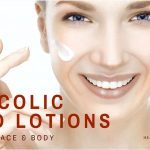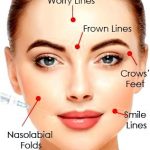
Using alpha hydroxy acids, particularly glycolic acidity, has expanded dramatically in the past decade to treat skin conditions, including hyperpigmentation. Due to their relative safety profile in contrast to more powerful agents for example trichloracetic acidity, glycolic acidity peels are frequently utilized by dermatologists, cosmetic surgeons, aestheticians, along with other skincare specialists. Indeed, because the majority of the world’s human population is brown or dark skinned, a lot of effort and expense for that performance of peels has been focused on treating disorders of hyperpigmentation, particularly melasma. Hydroquinone continues to be proven safe and efficient in treating melasma and other kinds of hyperpigmentation.5 Studies evaluating the effectiveness of glycolic acidity peels for melasma so far happen to be out of control trials, happen to be they canrrrt yield statistically significant results, used subjective ways of evaluation, and have not studied a uniform patient population.2,3
We searched for to carry out a randomized, controlled, investigator-masked, split-faced prospective trial utilizing a uniform population and lately developed objective ways of evaluation to find out whether glycolic acidity peels hasten improvement of melasma with concomitant utilization of HQ. Our study shown statistically significant step up from each side from the face from baseline, without any factor quietly which was peeled. This improvement seemed to be noted on subjective analysis, as physician and patient global evaluations says most sufferers had a minimum of moderate improvement. We controlled for exposure to the sun using the patient as her very own control, calculating pigmentation in the suprasternal notch, a sun-uncovered but untreated site. The measurement taken in the suprasternal notch revealed no factor in pigmentation through the study.
The outcomes from the straight line analog scale correlated using the other findings for the reason that there wasn’t any factor in the quality of improvement using HQ alone versus combination therapy with HQ and glycolic acidity peels. In addition, physician global evaluation results supported these bits of information for the reason that the therapy-masked investigator couldn’t identify a better step up from each side from the face. The individual global evaluation, however, says almost 3 / 4 of the sufferers noted improvement quietly which was peeled. This subjective patient bias emphasizes the significance of masking and controls within the performance of numerous studies. This may also explain why glycolic acidity peels are extremely well-liked by patients. Possibly the smoothening and softening of your skin created by these peels accounts for their high acceptance instead of remarkable ability to lessen hyperpigmentation.
Standardized photographs were taken of patients with 35-mm color, polarized color, and Ultra violet photographs at baseline and also at the finish from the study (stereotactic camera Canfield Scientific Corporation, Fairfield, NJ). Ultraviolet reflectance photography is particularly helpful for discovering alterations in pigmentation with time, as epidermal melanin recognition using Ultra violet photography is 10 occasions more sensitive compared to visible light.10,11
Using polarized filters with color photography was a great approach to enhancing pigmentation in photographs of patients, as proven in Figure 3 and Figure 4. Ultraviolet reflectance photography is another valuable tool to intensify pigmentation however, patients must wash and degrease the face area before photography to avoid reflection in the surface of the skin, which obscures the assessment of pigmentation. The mexameter offered like a reproducible, easy-to-use tool for that objective measurement of pigmentation.
The result of glycolic acidity peels on skin is dependent upon the power of the acidity, pH, product formulation, period of time the acidity remains onto the skin, skin thickness, and sensitivity.12 The glycolic acidity utilized in this research would be a nonbuffered, nonneutralized glycolic acidity ester having a pH of just one.5 (20%) and 1.1 (30%) in individually packaged moistened pads. Although greater concentrations of glycolic acidity might have been used, glycolic acidity peels more than 30% frequently result in irritation and could cause paradoxical hyperpigmentation in brown-skinned patients. An sufficient peel was acquired within our patients using 20% and 30% glycolic acidity in line with the observation that many felt some tingling throughout the peel or developed mild erythema. Indeed, only 3 patients could tolerate a peel time period of a few minutes. Four patients developed significant erythema using the 20% and 30% peels, without epidermolysis or erosions, indicating that greater-strength peels may have led to greater morbidity.
Because improvement was noted on sides from the face after 8 days, we conclude that 4% topical HQ having a daily sun block works well in treating melasma. The use of 4 glycolic acidity peels of 20% to 30% in 8 days didn’t boost the hypopigmenting aftereffect of HQ alone. Further studies using patients of various racial backgrounds, more peels over a longer time, different peeling agents, or coupled with lately developed treatments for example microdermabrasion are later on to locate possible ways of treating melasma.
Recognized for publication March 23, 2002.

This research was based on a grant from ICN Pharmaceuticals Corporation.
This research was presented like a poster in the 58th annual meeting from the American Academy of Skin care, Bay Area, Calif, March 10-15, 2000.
We thank William H. Frawley, PhD, for help with record analysis.
Corresponding author and reprints: Amit G. Pandya, MD, Department of Skin care, College of Texas Southwestern Clinic, 5323 Harry Hines Blvd, Dallas, Texas 75390-9190 (e-mail: amit.pandya@utsouthwestern.edu).
Resourse: https://jamanetwork.com/journals/jamadermatology/fullarticle/
 Proskin Clinics
Proskin Clinics 
